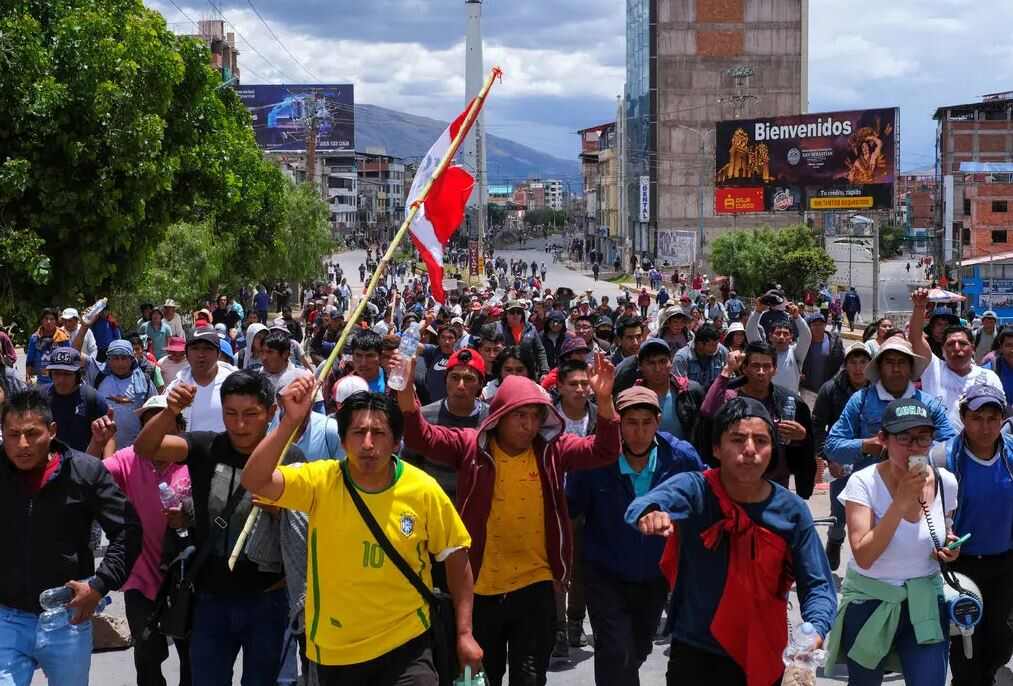On Wednesday, the government of Peru declared a nationwide state of emergency in an effort to bring an end to the widespread violence that has ensued since the country’s elected president was removed from office last week. The president had been attempting to dissolve Congress at the time of his removal.
Even for a nation that is used to seeing political unrest and demonstrations, this was a very unusual turn of events.
As part of the emergency action that was proclaimed by the country’s Minister of Defense, Alberto Otárola, the rights of assembly and freedom of transit, amongst other civil freedoms, were suspended for a period of thirty days. It was signed into law by the country’s new president, Dina Boluarte, on Wednesday evening, and it stipulated that the national police force would be enforcing it with the backing of the military. A curfew was not imposed as a result of the ruling.
Within a matter of hours, the Congress of Peru impeached him, and Mr. Castillo was jailed; this sparked waves of violent demonstrations by Castillo’s followers, who felt that his removal from office was unjustified.
Several political analysts have stated that despite the fact that previous governments have issued states of emergency in certain regions of the country, the measure has not been utilised on such a widespread scale since the 1990s, when the country was being brutalised by a Marxist terrorist group known as the Shining Path.
Ms. Boluarte, who has only been in her position as president for a week, urged reporters gathered outside the presidential palace on Wednesday to maintain their composure.
At first, there was not much of a response from the general population to the very rapid change. But in recent days, protestors have appeared in large numbers, mostly in rural regions, and have staged assaults against a variety of targets, including airports, industries, courthouses, and police stations, among others.
According to the authorities in Peru, there have been at least six fatalities, with the majority of those killed being teenage protestors, and more than one hundred cops have been wounded.
Recent reports from the Peruvian police state that since the previous Wednesday, 71 persons have been detained on suspicion of disrupting the public order in the departments of Lima, Apurmac, Arequipa, Ica, and La Libertad. These arrests took place.
The rallies are being supported by a wide variety of organisations, including the biggest federation of labour unions, the largest association of Indigenous people in the Peruvian Amazon, as well as several organisations representing impoverished farmers.
There has not yet been a single leader who is attempting to bring together all of the different factions. Peru has had six different presidents since 2016, a direct result of the political instability and high-level corruption scandals that have plagued the country.
In an interview that took place over the phone on Wednesday, Mr. Benavente said that the military had not yet been called into action to assist the police in the protection of vital infrastructure. At the same time that he was speaking, protestors in the city of Cusco were pulling back from a new effort to seize the airport there.
Mr. Benavente said that he was successful in helping to de-escalate the situation by reminding the leaders of the demonstration that the airport was already rendered inoperable.
Mr. Benavente is one of the few political people who gave off the impression that they had optimism about the possibility that discussion may give a peaceful and lawful route out of the situation. According to what he stated, the most important demand that all of the demonstrators share is for fresh general elections. A “truce” might be struck in a short amount of time if Congress and the administration can rapidly rewrite the Constitution in order to allow for early elections. In the event that this does not occur, he predicted that people’s demands will most likely continue to become more extreme.
During the election that took place a year ago, Mr. Castillo, a former schoolteacher and union leader who came from an impoverished rural home, electrified many Peruvians who were similar to him with his Marxist programme. During the campaign, he pledged to combat issues of poverty and inequality if elected. His call for a rewrite of the constitution was also met with opposition from the urban elite.
A significant number of his followers expressed their dissatisfaction with a system that was created just to benefit the wealthy.
However, once he took office, he found it difficult to rule, and his administration was plagued by accusations of corruption, inefficiency, and poor management.
On Monday evening, several of the nations that are aligned with Peru issued a joint statement in which they referred to the deposed president as “the victim of undemocratic harassment” and urged the political leaders of Peru to respect the “will of the citizens” who voted him into office. This statement was released in conjunction with the removal of the president.
In the joint statement that was released by the governments of Colombia, Bolivia, Argentina, and Mexico, Mr. Castillo was referred to as “president,” but Ms. Boluarte was not mentioned at all.

